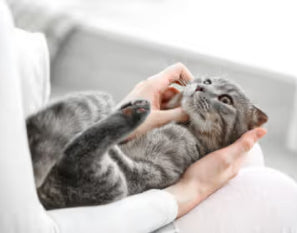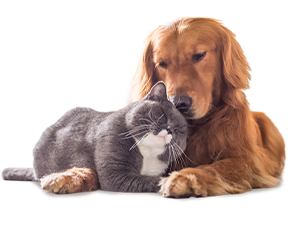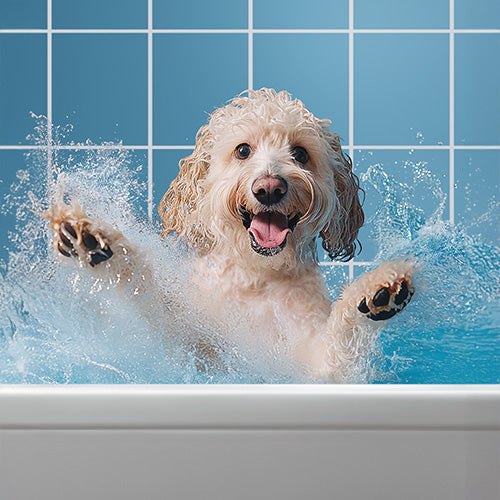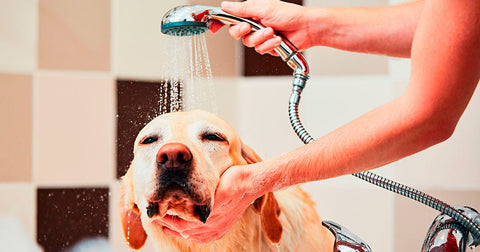
Hat deine Katze schwarze Punkte am Kinn?
Wusstest du, dass auch Katzen Akne bekommen können? Besonders häufig tritt diese in Form von kleinen schwarzen Punkten oder Beulen am Kinn auf und kann dort unangenehmen Juckreiz verursachen. In diesem Artikel erfährst du mehr über Katzenakne, ihre Anzeichen und Ursachen sowie mögliche Behandlungsoptionen.
Was ist Akne am Kinn bei Katzen?
Wenn sich zu viel Keratin (der Hauptbestandteil des Haares) in den Poren ansammelt, kann es zu Verstopfungen und Verkrustungen kommen, wodurch sich Mitesser bilden. Sammeln sich zusätzlich Bakterien an, kann dies zur Bildung von Pusteln oder Pickeln führen. Akne am Kinn kann bei Katzen einmalig oder auch chronisch auftreten. In letzterem Fall benötigt die Katze eine langfristige Behandlung.
Wodurch entsteht Akne am Kinn bei Katzen?
Wie oben beschrieben, kann es hilfreich sein, sich zu überlegen, was Akne am Kinn eigentlich ist, um die zugrunde liegenden Ursachen zu verstehen. Die Hauptursache kann von Individuum zu Individuum variieren. Manche Katzen produzieren zu viel Talg, ein natürliches Hautfett, und manche Katzen haben besonders viele Talgdrüsen. Sehr fettige Haut begünstigt die Entstehung von Akne am Kinn, da der Talg die Haarfollikel verstopft.
Katzen sind sensible Tiere und leiden schnell unter Stress, was zu Verhaltensauffälligkeiten wie übermäßigem Kinnreiben und/oder Hautproblemen führen kann. Stress schwächt außerdem das Immunsystem und macht die Katze anfälliger für Hautunreinheiten oder -entzündungen. Weitere mögliche Ursachen für Akne am Kinn sind Allergien, virale oder bakterielle Infektionen und mangelnde Hygiene.e.
Wie wird Akne am Kinn diagnostiziert?
Akne am Kinn von Katzen ist recht einfach zu erkennen und zu diagnostizieren. Zu den klinischen Symptomen gehören in der Regel schwarze Flecken oder Pickel am oder um das Kinn herum. Diese Flecken können manchmal rot und geschwollen erscheinen und stark jucken. Auch Haarausfall gehört zu den typischen Symptomen. Die Katze kratzt sich übermäßig stark am Kinn oder reibt sich an Gegenständen. Der Tierarzt kann Kinnakne meist anhand der klinischen Symptome und des Erscheinungsbildes der Haut sicher diagnostizieren, in einigen Fällen sind jedoch weitere Untersuchungen nötig, um die jeweilige Ursache abzuklären.
Neigen bestimmte Katzen zu Kinnakne?
Grundsätzlich betrifft diese Erkrankung nicht nur junge Katzen, wie es meist beim Menschen der Fall ist, sondern Katzen jeden Alters. Derzeit gibt es keine Hinweise darauf, dass sie bei Katern häufiger auftritt als bei Katzen. Bestimmte brachyzephale Rassen wie Perserkatzen und Britisch Kurzhaar können aufgrund ihrer Gesichtsform und überschüssiger Hautfalten anfälliger für Katzenakne sein. Daher benötigen diese Katzenrassen besonders häufig eine langfristige Hautpflege.
Behandlung von Kinnakne
Die Behandlung von Katzenakne erfordert oftmals einen multimodalen Behandlungsansatz, bei welchem meist topische Produkte zum Einsatz kommen. Die richtige Hautpflege ist bei Problemen mit Akne entscheidend, insbesondere bei Katzen, die zu fettiger Haut neigen. In diesem Fall eignen sich besonders die Produkte der DOUXO® S3 SEB-Reihe, welche als Mousse und als Shampoo erhältlich sind. DOUXO® S3 SEB:
- reguliert die Talgproduktion
- wirkt gegen Schuppen
- bringt die Hautflora ins Gleichgewicht
Für Katzen, die zu Hautinfektionen neigen, eignen sich besonders die Produkte der DOUXO® S3 PYO-Linie, welche als Shampoo sowie als Pads erhältlich sind. DOUXO® S3 PYO:
- reinigt und desinfiziert die Haut
- wirkt antibakteriell und reduziert klinisch erwiesen die Bakterienzahl auf der Haut
- versorgt die Haut mit Feuchtigkeit und stärkt die Hautbarriere
In schweren Fällen kann eine systemische Behandlung mit Antibiotika und Entzündungshemmern notwendig sein, um die Erkrankung unter Kontrolle zu bringen. Insbesondere wenn deine Katze unter starkem Juckreiz leidet, ist es besonders wichtig, das Reiben bestmöglich zu unterbinden, da dies die Erkrankung verschlimmern kann. Ist Stress der Auslöser, gilt es, die Umgebung und den Lebensstil der Katze entsprechend stressfrei zu gestalten.
Zusammenfassend lässt sich festhalten, dass Prävention immer oberste Priorität hat, damit es gar nicht erst zum Ausbruch bestimmter Krankheiten kommt. Dies gilt auch im Fall von Katzenakne. Wenn deine Katze zu einer Rasse gehört, die für Akne am Kinn prädisponiert ist, sollest du dich frühzeitig an deinen Tierarzt wenden, um die entsprechenden Vorbeugungs- bzw. Behandlungsmaßnahmen für deine Katze zu besprechen.
Wir empfehlen DOUXO® S3 SEB und DOUXO® S3 PYO.

















